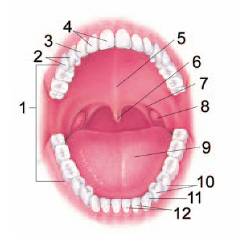Digestive SystemIntroduction |
What are some diagnostic procedures used to examine the digestive tract? |
Several diagnostic tests are available to examine organs of the digestive tract and to determine causes of abdominal pain and disorders that affect the digestive system. Some of the commonly performed screening tests are colonoscopy, flexible sigmoidoscopy, endoscopy, upper GI series and lower GI series X-rays, ERCP (endoscopic retrograde cholangiopancreatography), and liver biopsy.
Colonoscopy allows a physician to look inside the entire large intestine. It is used to detect early signs of cancer in the colon and rectum.
Flexible sigmoidoscopy allows a physician to examine the inside of the large intestine from the rectum through the sigmoid or descending colon (the last part of the colon). It is used to detect the early signs of cancer in the descending colon and rectum.
Upper endoscopy allows a physician to look inside the esophagus, stomach, and duodenum (the first part of the small intestine). This procedure is used to discover the reason for swallowing difficulties, nausea, vomiting, reflux, bleeding, indigestion, abdominal pain, or chest pain.
The upper GI series uses X-rays to diagnose problems in the esophagus, stomach, and duodenum. Ulcers, scar tissue, abnormal growths, hernias, or areas where something is blocking the normal path of food through the digestive system are visible with the upper GI series.
The lower GI series uses X-rays to diagnose problems in the large intestine, including the colon and rectum. Problems such as abnormal growths, ulcers, polyps, diverticuli, and colon cancer may be diagnosed through a lower GI series.
ERCP (endoscopic retrograde cholangiopancreatography) enables a physician to diagnose and treat problems in the liver, gall bladder, bile ducts, and pancreas.
Liver biopsy is performed when other liver function tests reveal the liver is not working properly. It allows a physician to examine a small sample of liver tissue for signs of damage or disease.

